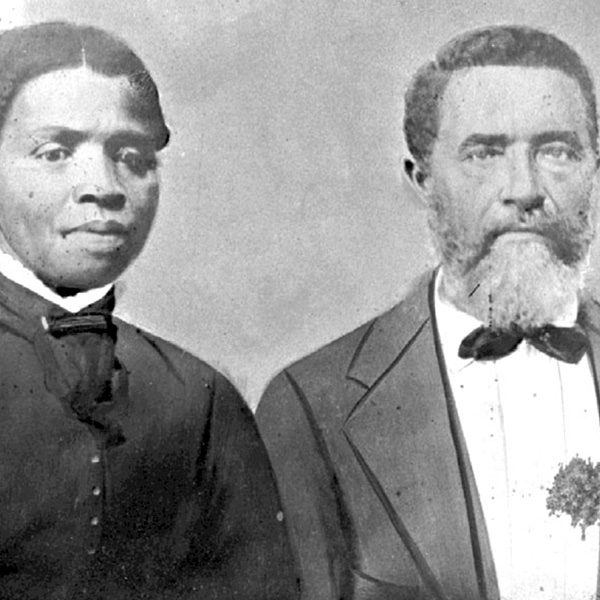Piecing Together History Unit Plan: A Turn of the Century African American Farmstead

Download lesson plan and included materials
Subject: Social Studies
Grade: 7th
Author: Mary S. Black (1999), TEKS updated by Jason Terry (2023)
Time Duration: Six 55-minute class periods
Overview: In this unit, students use primary source materials to learn about African American history at the turn of the century in Texas. As students practice using maps, artifacts, and oral histories, they gain important skills as well as content. The inquiry activities allow adolescents to explore their own identities, this making the lessons personally meaningful.
TEKS: Social Studies, Grade 7
Please disregard the outdated TEKS in the attached Unit Plan document and use the updated TEKS below:
Lesson 1 TEKS
- (1A), identify the major eras in Texas history, describe their defining characteristics, and explain the purpose of dividing the past into eras, including Natural Texas and its People; Age of Contact; Spanish Colonial; Mexican National; Revolution and Republic; Early Statehood; Texas in the Civil War and Reconstruction; Cotton, Cattle, and Railroads; Age of Oil; Texas in the Great Depression and World War II; Civil Rights; and Contemporary Texas
- (20A), differentiate between, locate, and use valid primary and secondary sources such as media and news services, biographies, interviews, and artifacts to acquire information about Texas
- (20B), analyze information by applying absolute and relative chronology through sequencing, categorizing, identifying cause-and-effect relationships, comparing, contrasting, finding the main idea, summarizing, making generalizations and predictions, and drawing inferences and conclusions
- (22A), use social studies terminology correctly
Lesson 2 TEKS
- (1A), identify the major eras in Texas history, describe their defining characteristics, and explain the purpose of dividing the past into eras, including Natural Texas and its People; Age of Contact; Spanish Colonial; Mexican National; Revolution and Republic; Early Statehood; Texas in the Civil War and Reconstruction; Cotton, Cattle, and Railroads; Age of Oil; Texas in the Great Depression and World War II; Civil Rights; and Contemporary Texas
- (20A), differentiate between, locate, and use valid primary and secondary sources such as media and news services, biographies, interviews, and artifacts to acquire information about Texas
Lesson 3 TEKS
- (20A), differentiate between, locate, and use valid primary and secondary sources such as media and news services, biographies, interviews, and artifacts to acquire information about Texas
- (20B), analyze information by applying absolute and relative chronology through sequencing, categorizing, identifying cause-and-effect relationships, comparing, contrasting, finding the main idea, summarizing, making generalizations and predictions, and drawing inferences and conclusions
- (21A), create and interpret thematic maps, graphs, and charts representing various aspects of Texas during the 19th, 20th, and 21st centuries
Lesson 4 TEKS
- (20A), differentiate between, locate, and use valid primary and secondary sources such as media and news services, biographies, interviews, and artifacts to acquire information about Texas
- (20C), organize and interpret information from outlines, reports, databases, and visuals, including graphs, charts, timelines, and maps
Lesson 5 TEKS
- (20A), differentiate between, locate, and use valid primary and secondary sources such as media and news services, biographies, interviews, and artifacts to acquire information about Texas
- (20B), analyze information by applying absolute and relative chronology through sequencing, categorizing, identifying cause-and-effect relationships, comparing, contrasting, finding the main idea, summarizing, making generalizations and predictions, and drawing inferences and conclusions
- (20C), organize and interpret information from outlines, reports, databases, and visuals, including graphs, charts, timelines, and maps
- (22A), use social studies terminology correctly
Lesson 6 TEKS
- (20A), differentiate between, locate, and use valid primary and secondary sources such as media and news services, biographies, interviews, and artifacts to acquire information about Texas;
- (20B), analyze information by applying absolute and relative chronology through sequencing, categorizing, identifying cause-and-effect relationships, comparing, contrasting, finding the main idea, summarizing, making generalizations and predictions, and drawing inferences and conclusions
Lesson 7 TEKS
- (20A), differentiate between, locate, and use valid primary and secondary sources such as media and news services, biographies, interviews, and artifacts to acquire information about Texas
Culminating Project TEKS
- (20A), differentiate between, locate, and use valid primary and secondary sources such as media and news services, biographies, interviews, and artifacts to acquire information about Texas
- (22A), use social studies terminology correctly
- (22B), use effective written communication skills, including proper citations and avoiding plagiarism
- (22C), create written, oral, and visual presentations of social studies information
Activities and Procedures: See Unit Plan attachment for lesson details. Please note that some weblinks in the lesson plan are no longer functioning. These are for extension activities, and the lesson plans do not require them. Links that no longer work are struck through.